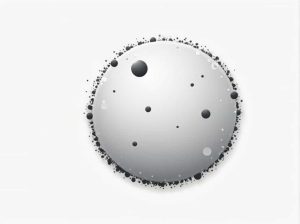The Hertzsprung-Russell (H-R) diagram is a crucial tool in astronomy, helping scientists classify stars based on their luminosity, temperature, and evolutionary stage. One of the most well-known stars in the universe is our Sun. But where does it fit on the H-R diagram? In this topic, we will explore the position of the Sun on this diagram, its characteristics, and what it means for our solar system.
What Is the Hertzsprung-Russell Diagram?
The H-R diagram is a graphical representation that plots stars according to their absolute magnitude (brightness) and surface temperature. It was developed independently by Ejnar Hertzsprung and Henry Norris Russell in the early 20th century. The diagram categorizes stars into several groups, including:
- Main Sequence Stars – The most common type, where stars spend most of their lifetime.
- Giant and Supergiant Stars – Larger and more luminous than main sequence stars.
- White Dwarfs – Small, dense remnants of stars that have exhausted their nuclear fuel.
Where Is Our Sun on the H-R Diagram?
Our Sun is classified as a main sequence star, meaning it is in the most stable phase of its life. It lies near the middle of the H-R diagram, specifically in the G-type main sequence, often referred to as a G2V star.
Characteristics of the Sun in the H-R Diagram
- Temperature – The Sun has a surface temperature of approximately 5,778 Kelvin (5,505°C or 9,941°F).
- Luminosity – It has a luminosity of 1 solar unit, meaning it serves as a reference for measuring the brightness of other stars.
- Size – The Sun has a diameter of about 1.39 million kilometers (864,000 miles).
- Mass – Its mass is approximately 1.989 × 10³⁰ kg, making it an average-sized star.
- Color – The Sun appears yellow-white due to its surface temperature.
Why Is the Sun a Main Sequence Star?
The Sun belongs to the main sequence because it is currently fusing hydrogen into helium in its core, producing energy through nuclear fusion. This phase is the longest and most stable in a star’s lifecycle. The Sun has been in this stage for about 4.6 billion years and is expected to remain in it for another 5 billion years before evolving into a red giant.
What Happens After the Main Sequence Phase?
Although the Sun is currently stable, it will eventually leave the main sequence. Here’s what will happen:
- Red Giant Phase – As hydrogen runs out, the Sun will expand and become a red giant, engulfing nearby planets.
- Helium Fusion – It will begin fusing helium into heavier elements like carbon and oxygen.
- White Dwarf Stage – After shedding its outer layers, the Sun will shrink into a white dwarf.
- Final Fate – Over billions of years, the white dwarf will cool down and fade into a black dwarf.
Why Is the Sun’s Position Important for Life on Earth?
The Sun’s classification as a main sequence star is critical for sustaining life on Earth. Its stable energy output provides:
- Consistent Light and Heat – Essential for photosynthesis and climate stability.
- Gravitational Stability – Keeps planets in predictable orbits.
- Long Lifespan – Ensures billions of years of habitability.
If the Sun were a different type of star, life on Earth might not exist as we know it.
How Does the Sun Compare to Other Stars?
Smaller Stars (Red Dwarfs)
- Cooler and less luminous.
- Longer lifespans (trillions of years).
- More common than Sun-like stars.
Larger Stars (Blue Giants & Supergiants)
- Much hotter and more luminous.
- Short lifespans (millions of years).
- Explode as supernovae, creating neutron stars or black holes.
Compared to these, the Sun is moderate in size and temperature, making it ideal for a stable planetary system.
On the Hertzsprung-Russell diagram, our Sun is classified as a G-type main sequence star. This classification explains its temperature, brightness, and stability, which are crucial for life on Earth. While it will eventually evolve into a red giant and later a white dwarf, its current state ensures billions of years of habitable conditions for our planet. Understanding the Sun’s position on the H-R diagram helps scientists study stellar evolution and the potential for life beyond our solar system.



